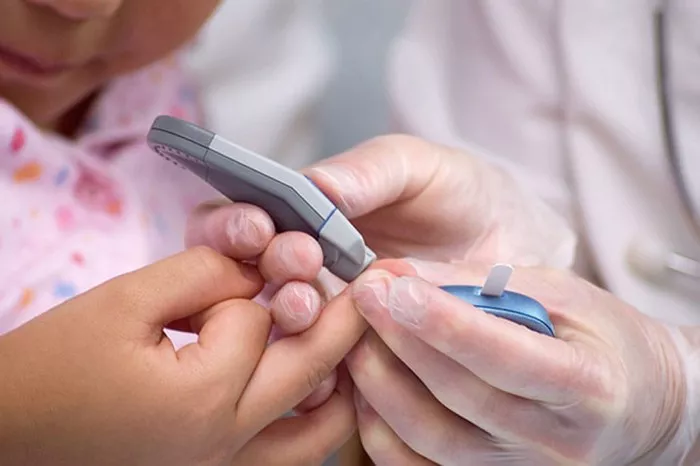Gestational Diabetes Mellitus (GDM) is a medical term used to describe a type of diabetes that develops during pregnancy. In this article, we’ll delve into the definition of GDM, its historical significance, and the evolution of treatments for this condition.
Understanding GDM
Gestational Diabetes Mellitus (GDM) is a form of diabetes that occurs during pregnancy and typically resolves after childbirth. It is characterized by high blood sugar levels (hyperglycemia) that develop or are first recognized during pregnancy. GDM can pose risks to both the mother and the baby if left untreated or uncontrolled.
The Origin of GDM
The earliest documented case of gestational diabetes dates back to ancient times, although the condition was not formally recognized and defined until much later in medical history. The first recorded mention of diabetes during pregnancy can be found in ancient Egyptian medical texts, where descriptions of excessive thirst and urination in pregnant women were noted.
However, it wasn’t until the 20th century that medical researchers began to investigate and study gestational diabetes in more detail. In 1964, O’Sullivan and Mahan introduced the concept of screening pregnant women for gestational diabetes using a glucose challenge test (GCT), laying the foundation for modern diagnostic methods and treatment approaches.
Development of Treatments for GDM
The management of gestational diabetes has evolved significantly over the years, with advancements in medical technology, research, and treatment options.
In the past, dietary modifications and insulin therapy were the primary treatment modalities for managing GDM. However, with the advent of new medications and therapies, the management of GDM has become more tailored and individualized.
In 1924, Dr. Priscilla White, a pioneering endocrinologist at the Joslin Diabetes Center in Boston, Massachusetts, made a groundbreaking observation while treating pregnant women with diabetes. Dr. White noticed that some pregnant women experienced significant improvements in their diabetes symptoms during pregnancy, only to have their blood sugar levels return to abnormal levels after childbirth.
This phenomenon, known as the “White’s paradox,” fascinated the medical community and sparked further research into the unique metabolic changes that occur during pregnancy. Dr. White’s observations laid the groundwork for understanding the hormonal and physiological mechanisms underlying gestational diabetes and contributed to the development of modern diagnostic criteria and treatment approaches.
One of the significant milestones in the treatment of GDM was the introduction of oral glucose-lowering medications, such as metformin and glyburide, which provided alternative options for women who were unable to control their blood sugar levels with diet and lifestyle modifications alone. These medications are now commonly used as adjuncts to diet and exercise in the management of GDM.
Metformin, a widely used medication in the treatment of type 2 diabetes, works by reducing the production of glucose in the liver and improving insulin sensitivity in the body’s tissues.
Its effectiveness in lowering blood sugar levels made it an attractive option for women with gestational diabetes, particularly those who were unable to tolerate or benefit from insulin therapy.
Similarly, glyburide, another oral medication commonly used in the treatment of type 2 diabetes, helps lower blood sugar levels by stimulating the pancreas to release more insulin and improving the body’s response to insulin.
It provided an additional oral treatment option for women with gestational diabetes, offering convenience and flexibility in managing their condition.
The availability of these oral glucose-lowering medications expanded the treatment options available to women with gestational diabetes, allowing healthcare providers to tailor treatment plans to individual needs and preferences.
However, it’s important to note that the use of these medications during pregnancy requires careful monitoring and oversight by healthcare professionals to ensure the safety and well-being of both mother and baby.
Additionally, advances in prenatal care and monitoring techniques, such as continuous glucose monitoring (CGM) and fetal ultrasound, have improved the detection and management of GDM-related complications, such as macrosomia (large birth weight) and birth trauma.
Current Trends and Future Directions
In recent years, there has been growing interest in the role of lifestyle interventions, such as diet and exercise, in the prevention and management of gestational diabetes. Studies have shown that maintaining a healthy lifestyle before and during pregnancy can reduce the risk of developing GDM and improve pregnancy outcomes for both mother and baby.
Furthermore, ongoing research efforts are focused on identifying biomarkers and risk factors for gestational diabetes, as well as developing novel treatment strategies and interventions to optimize maternal and fetal health outcomes.
With continued advancements in medical science and technology, the future holds promise for further improvements in the prevention, diagnosis, and management of gestational diabetes.
Conclusion
Gestational Diabetes Mellitus (GDM) stands as a significant medical condition, demanding vigilant monitoring and management to safeguard the health of both mother and baby. However, as research continues to expand our understanding of GDM, the future holds hope for improved prevention, diagnosis, and management strategies to support the health and well-being of women and their babies during pregnancy.

























